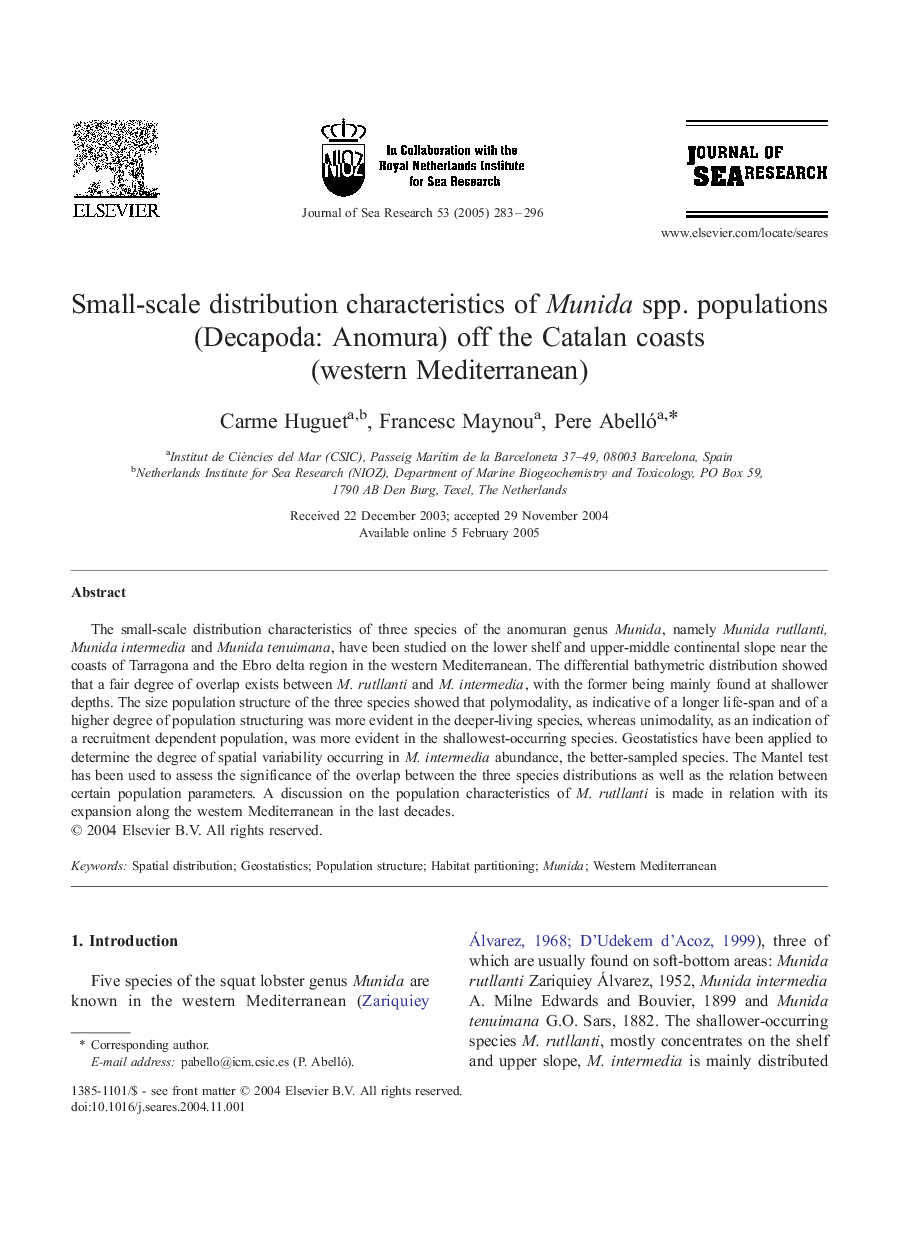| Article ID | Journal | Published Year | Pages | File Type |
|---|---|---|---|---|
| 9484073 | Journal of Sea Research | 2005 | 14 Pages |
Abstract
The small-scale distribution characteristics of three species of the anomuran genus Munida, namely Munida rutllanti, Munida intermedia and Munida tenuimana, have been studied on the lower shelf and upper-middle continental slope near the coasts of Tarragona and the Ebro delta region in the western Mediterranean. The differential bathymetric distribution showed that a fair degree of overlap exists between M. rutllanti and M. intermedia, with the former being mainly found at shallower depths. The size population structure of the three species showed that polymodality, as indicative of a longer life-span and of a higher degree of population structuring was more evident in the deeper-living species, whereas unimodality, as an indication of a recruitment dependent population, was more evident in the shallowest-occurring species. Geostatistics have been applied to determine the degree of spatial variability occurring in M. intermedia abundance, the better-sampled species. The Mantel test has been used to assess the significance of the overlap between the three species distributions as well as the relation between certain population parameters. A discussion on the population characteristics of M. rutllanti is made in relation with its expansion along the western Mediterranean in the last decades.
Keywords
Related Topics
Physical Sciences and Engineering
Earth and Planetary Sciences
Oceanography
Authors
Carme Huguet, Francesc Maynou, Pere Abelló,
